BMW iX1 vs Kia Sportage – Differences & prices compared
Compare performance, boot space, consumption and price in one view.
Find out now: which car is the better choice for you – BMW iX1 or Kia Sportage?
The BMW iX1 (SUV) comes with a Electric engine and Automatic transmission. In comparison, the Kia Sportage (SUV) features a Diesel MHEV, Petrol MHEV, Full Hybrid, Petrol or Plugin Hybrid engine with Manuel or Automatic transmission.
When it comes to boot capacity, the BMW iX1 offers 490 L, while the Kia Sportage provides 587 L – depending on how much space you need. If you’re looking for more power, decide whether the 313 HP of the BMW iX1 or the 252 HP of the Kia Sportage suits your needs better.
In terms of consumption, the values are 15.80 kWh per 100 km for the BMW iX1, and 1.20 L for the Kia Sportage.
Price-wise, the BMW iX1 starts at 41800 £, while the Kia Sportage is available from 29700 £. Compare all the details and find out which model fits your lifestyle best!
BMW iX1
The BMW iX1 stands out as a versatile addition to the electric vehicle market, seamlessly combining compact dimensions with advanced electric technology. Its sophisticated design elements and premium interiors ensure a luxurious driving experience, while the vehicle's performance focuses on delivering both efficiency and agility. With enhanced connectivity features and an emphasis on sustainability, this model represents a significant step forward in BMW's commitment to a greener future.
details @ press.bmwgroup.com
@ press.bmwgroup.com
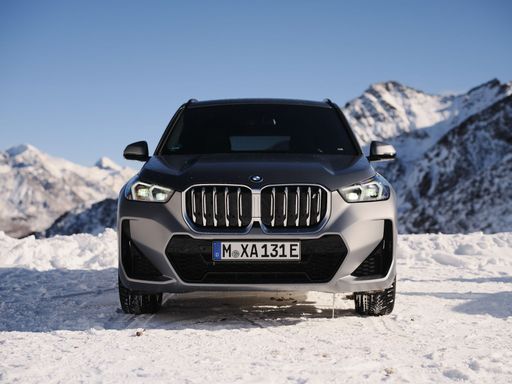 @ press.bmwgroup.com
@ press.bmwgroup.com
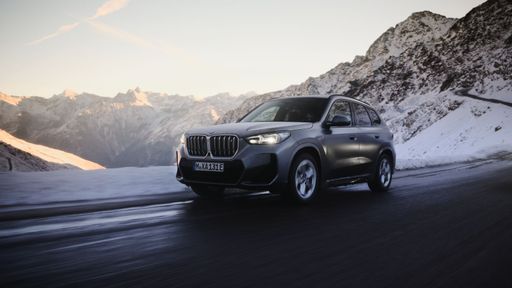 @ press.bmwgroup.com
@ press.bmwgroup.com
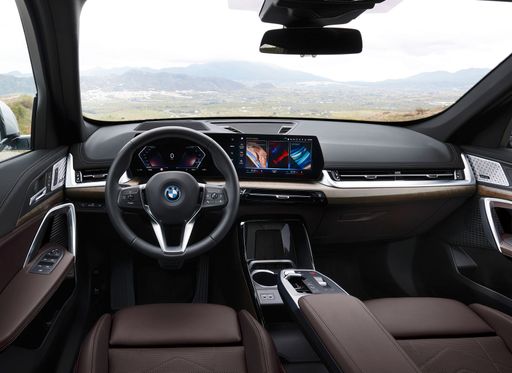 @ press.bmwgroup.com
@ press.bmwgroup.com
 @ press.bmwgroup.com
@ press.bmwgroup.com
Kia Sportage
The Kia Sportage stands out in the crowded SUV market with its elegant design and advanced features. This vehicle offers a refined driving experience, combining comfort with responsive handling. Inside, the Sportage boasts a well-appointed cabin that provides ample space for passengers and luggage, making it an ideal choice for both city driving and longer journeys.
details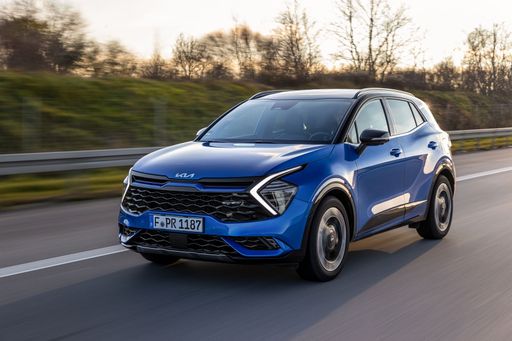 @ press.kia.com
@ press.kia.com
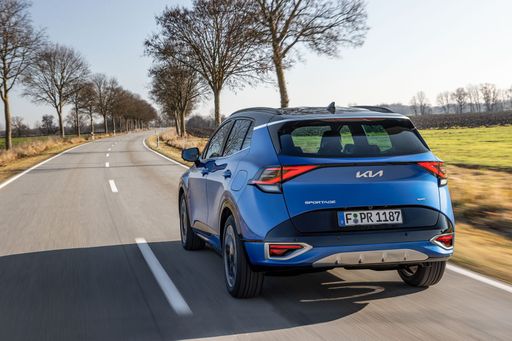 @ press.kia.com
@ press.kia.com
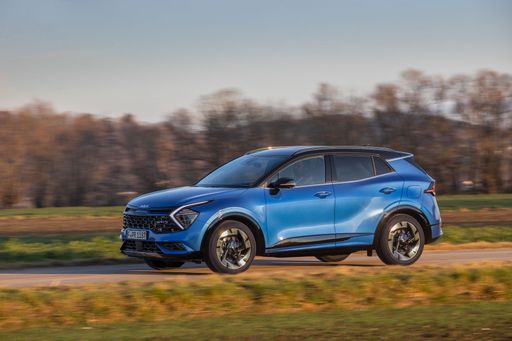 @ press.kia.com
@ press.kia.com
 @ press.kia.com
@ press.kia.com

|

|
|
|
|
Costs and Consumption |
|
|---|---|
|
Price
41800 - 54600 £
|
Price
29700 - 44700 £
|
|
Consumption L/100km
-
|
Consumption L/100km
1.2 - 7.9 L
|
|
Consumption kWh/100km
15.8 - 17.1 kWh
|
Consumption kWh/100km
-
|
|
Electric Range
436 - 463 km
|
Electric Range
64 km
|
|
Battery Capacity
64.80 kWh
|
Battery Capacity
-
|
|
co2
0 g/km
|
co2
28 - 180 g/km
|
|
Fuel tank capacity
-
|
Fuel tank capacity
42 - 54 L
|
Dimensions and Body |
|
|---|---|
|
Body Type
SUV
|
Body Type
SUV
|
|
Seats
5
|
Seats
5
|
|
Doors
5
|
Doors
5
|
|
Curb weight
1940 - 2085 kg
|
Curb weight
1526 - 1905 kg
|
|
Trunk capacity
490 L
|
Trunk capacity
526 - 587 L
|
|
Length
4500 mm
|
Length
4515 - 4540 mm
|
|
Width
1845 mm
|
Width
1865 mm
|
|
Height
1616 mm
|
Height
1645 - 1650 mm
|
|
Payload
495 kg
|
Payload
510 - 580 kg
|
Engine and Performance |
|
|---|---|
|
Engine Type
Electric
|
Engine Type
Diesel MHEV, Petrol MHEV, Full Hybrid, Petrol, Plugin Hybrid
|
|
Transmission
Automatic
|
Transmission
Manuel, Automatic
|
|
Transmission Detail
Reduction Gearbox
|
Transmission Detail
Manual Gearbox, Dual-Clutch Automatic, Automatic Gearbox
|
|
Drive Type
Front-Wheel Drive, All-Wheel Drive
|
Drive Type
Front-Wheel Drive, All-Wheel Drive
|
|
Power HP
204 - 313 HP
|
Power HP
136 - 252 HP
|
|
Acceleration 0-100km/h
5.6 - 8.6 s
|
Acceleration 0-100km/h
7.9 - 11.6 s
|
|
Max Speed
170 - 180 km/h
|
Max Speed
180 - 203 km/h
|
|
Torque
250 - 494 Nm
|
Torque
250 - 350 Nm
|
|
Number of Cylinders
-
|
Number of Cylinders
4
|
|
Power kW
150 - 230 kW
|
Power kW
100 - 185 kW
|
|
Engine capacity
-
|
Engine capacity
1598 cm3
|
General |
|
|---|---|
|
Model Year
2022 - 2023
|
Model Year
2024 - 2025
|
|
CO2 Efficiency Class
A
|
CO2 Efficiency Class
D, E, F, B, G
|
|
Brand
BMW
|
Brand
Kia
|
BMW iX1
A New Era of Innovation: Meet the BMW iX1
The automotive world has seen a seismic shift towards sustainability and electrification, and BMW has solidified its place in this evolution with the introduction of the BMW iX1. As a fully electric SUV, the iX1 serves as a testament to how luxury, performance, and eco-consciousness can harmoniously blend in the modern automotive landscape.
Exquisite Design Meets Purposeful Engineering
The BMW iX1 is not just an electric vehicle; it's an embodiment of cutting-edge design and technology. With its bold SUV silhouette, the iX1 boasts dimensions of 4500 mm in length, 1845 mm in width, and 1616 mm in height, providing a spacious yet agile presence on the road. Its dynamic aesthetic is complemented by an aerodynamic form that enhances efficiency, offering a drag coefficient that rivals traditional SUV models.
Powertrain and Performance Specifications
Beneath the hood of the BMW iX1 lays an electric motor that signifies the future of automotive engineering. Available variants offer power outputs ranging from 204 to 313 PS (150 to 230 kW). The iX1 comes with either a front-wheel or all-wheel drivetrain, catering to different driving preferences. The xDrive30 variant, in particular, features all-wheel drive, delivering up to 313 PS for those who crave enhanced traction and control.
With a commendable electric consumption of 15.8 to 17.1 kWh per 100 km, the iX1 strikes a fine balance between power and efficiency. Its acceleration stats are equally impressive, with the ability to go from 0-100 km/h in as little as 5.6 seconds. This ensures that while it's eco-friendly, it does not compromise on the exhilaration factor. The vehicle can reach a top speed range between 170 and 180 km/h.
A Journey Without Interruptions: Range and Battery Life
The iX1's battery, boasting a capacity of 64.8 kWh, provides a substantial driving range of 436 to 463 km on a single charge, depending on the variant. This means long road trips are not only feasible but enjoyable, eliminating the range anxiety often associated with electric vehicles.
Comfort and Technological Interior
Inside, the iX1 exemplifies BMW’s commitment to luxury and innovation. It’s a five-seater SUV designed with comfort at its forefront, featuring advanced technological interfaces that enrich the driving experience. The spacious cabin offers 490 litres of boot space, ensuring practicality without sacrificing style.
In terms of monthly costs, owning an iX1 can range between €1,147 and €1,453, considering the zero-emission appeal with a CO2 efficiency class of A.
The Financial Aspect of Sustainability
With a price range from €48,400 to €63,140, the BMW iX1 isn't just a vehicle—it's an investment in sustainable motoring. Factoring in a cost of around 45.9 to 58.1 cents per kilometre, the iX1 offers an economically viable option for the eco-conscious driver.
Conclusion: The Future Is Now
The BMW iX1 stands as a beacon of what the future holds for zero-emission vehicles. With a melding of sustainability, performance, and luxury, it's not just a car, but a glimpse into the next chapter of automotive history.
Kia Sportage
The Kia Sportage: A Technological Masterpiece
The Kia Sportage has been a stalwart in the SUV segment, consistently offering excellent value, style, and performance. In its latest iteration, the Sportage pushes the boundaries with a fusion of advanced technology and innovative design, making it an enticing option for all types of drivers.
Power and Performance: The Heart of the Sportage
The new Kia Sportage boasts a broad range of powertrain options, ensuring there's something for everyone. Engines vary from efficient diesel mild-hybrids, petrol mild-hybrids, full hybrids, to cutting-edge plug-in hybrids. Output ranges from a nimble 136 PS to a robust 252 PS, providing a balance between efficiency and exhilarating performance.
The plug-in hybrid variant, in particular, sets new standards with an impressive electric range of 64 km, and a combined fuel consumption of merely 1.2 L/100km, positioning it as a leader in eco-friendly engineering.
Transmission and Drivetrain Advancements
The Sportage offers both manual and automatic transmission options, including advanced dual-clutch systems that ensure smooth and responsive gear shifts. Both front-wheel-drive and all-wheel-drive configurations are available, allowing the Sportage to handle diverse driving conditions with confidence.
A Sleek and Spacious Design
At 4515 mm long, the Sportage strikes a harmonious balance between offering a compact exterior for city driving while maximising interior space. With seating for five and a generous boot capacity ranging from 526 to 587 litres, the Sportage is designed with practicality in mind. The added benefit of a low aerodynamics-enhancing stance contributes to its efficiency and dynamic performance.
Innovative Features for the Modern Driver
Kia prioritises driver comfort and convenience in the Sportage, with the latest model featuring a suite of high-tech amenities. Depending on the trim, drivers can enjoy state-of-the-art infotainment systems, adaptive cruise control, and a range of safety technologies that earn high efficiency classifications, from B to F in CO2-efficiency class.
Pricing and Economy: Value for Every Penny
The Kia Sportage is available within a price range of €34,690 to €52,190, offering a cost-effective solution without compromising on quality or features. Monthly costs are optimised as well, ranging from €964 to €1,243, ensuring long-term savings alongside a lower environmental impact, with CO2 emissions between 28 to 162 g/km.
Conclusion: Why the Kia Sportage Stands Out
The Kia Sportage continues to solidify its position as a leading choice in the SUV market through its harmonious blend of technology, performance, and practicality. With such a wide range of configurations and trims, it caters to various needs, making it a versatile and intelligent investment for the environmentally conscious and the performance enthusiast alike. Whether for urban adventures or rural expeditions, the Sportage promises a journey defined by comfort, reliability, and innovation.
Which drive types are available for the BMW iX1?
Available as Front-Wheel Drive or All-Wheel Drive.
The prices and data displayed are estimates based on German list prices and may vary by country. This information is not legally binding.
